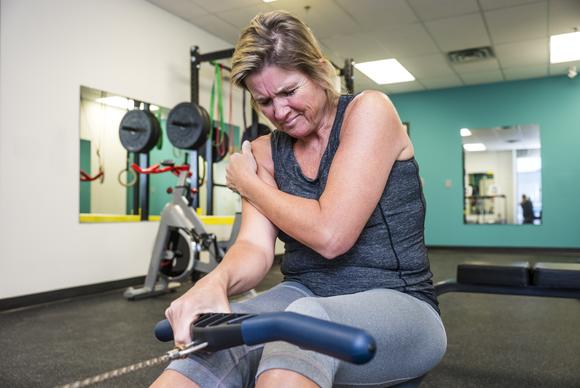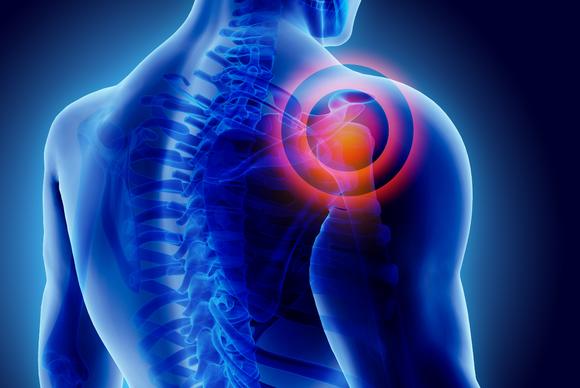View Providers

What Pain in Your Shoulder Could Mean
Your shoulder is a complicated joint. It has three bones and lots of muscles, tendons and ligaments. Tendons connect muscles to bones. Ligaments connect bones to other bones. Your shoulder is also a very moveable joint. Think about all the ways you can move your arm. These many parts and movements can lead to various causes of shoulder pain. Here are six of the more common ones.

1. Bursitis
You have a fluid-filled sac—or bursa—on the top of your shoulder. It sits between your shoulder muscles and the top of the joint formed by your shoulder blade. This sac cushions your joint and allows muscles to move over the joint smoothly. Heavy use of your shoulder can cause the bursa to swell. This can cause shoulder pain and stiffness. Call your doctor if the pain and stiffness don't go away with rest and over-the-counter pain medicine.

2. Tendon Injuries
There are several tendons in and around your shoulder, attaching muscles to bones. These tendons can tear or swell. Tendon injuries can occur from a sudden injury, like falling on an outstretched arm. They can also occur gradually from wear and tear. A tendon injury causes pain and stiffness. Icing your shoulder may help reduce the swelling and the pain. See your doctor for severe pain or pain that does not get better with rest.

3. Instability
The socket where your upper arm bone sits inside your shoulder blade is shallow. This makes it easy for your shoulder to slip out of place if the muscles and tendons that hold it in place become stretched or damaged. A complete slip is a dislocation. This causes severe pain. You won't be able to move your shoulder. A partial slip is a subluxation. Repeated slips of either type can make your shoulder painful and unstable. Always let your doctor know if your shoulder slips out of place.

4. Arthritis
Arthritis is swelling and pain in a joint. Two types of arthritis can develop in your shoulder. Osteoarthritis is gradual damage from wear and tear. Rheumatoid arthritis is a disease that causes joint inflammation and destruction. Osteoarthritis usually occurs after middle age. Rheumatoid arthritis usually occurs at younger ages and affects other joints as well. If you continue to have shoulder pain that does not get better with rest and pain medicine, let your doctor know. Arthritis might be the cause.

5. Rotator Cuff Tear
The muscles and tendons that hold your shoulder in place in its socket are called your rotator cuff. These tendons and muscles can wear down over time and tear. They also can tear from a sudden injury, like a fall. A minor tear might cause nagging pain. A complete tear could be very painful. If you have nagging pain that does not go away or severe pain that limits shoulder motion, let your doctor know.

6. Frozen Shoulder
Stiffening of your shoulder joint can cause what's called a frozen shoulder. The first symptom may be pain that keeps you from using your shoulder. Over time, your shoulder becomes stiff. You may not be able to move it at all—like it's frozen in place. Many painful shoulder conditions can lead to frozen shoulder. It also can result from diseases like diabetes, thyroid disease, and rheumatoid arthritis. If you have shoulder pain that leads to a stiff or frozen shoulder, see your doctor.




